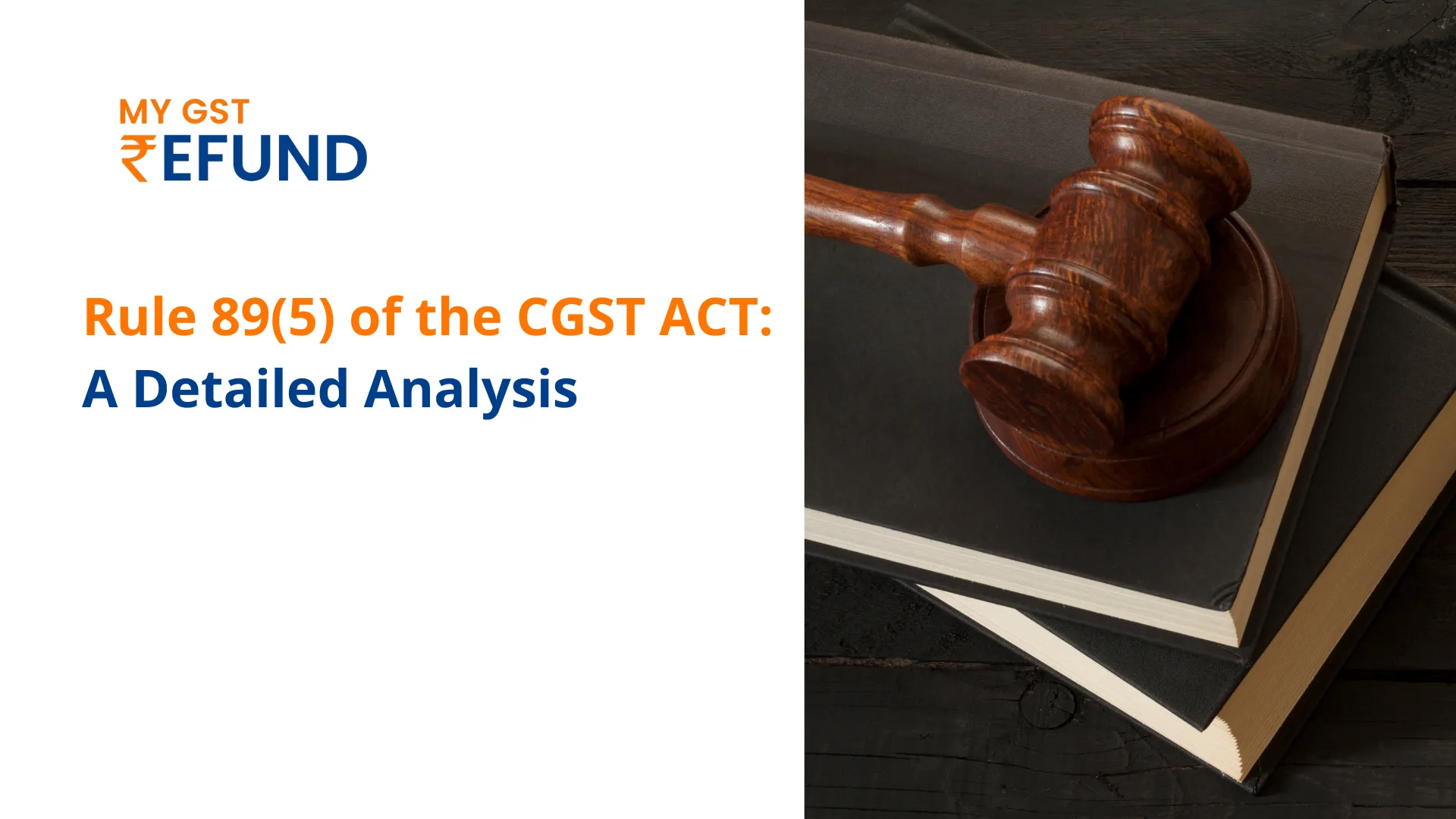Rule 89(5) of the CGST ACT
The Goods and Services Tax in India tries to ease indirect taxation; however, sometimes provisions require greater understanding as they are more complex. One such provision is Rule 89(5) of the Central Goods and Services Tax Rules, 2017, which is specifically for refunding unutilized ITC on account of inverted duty structure.
What is Rule 89(5)?
Rule 89(5) prescribes the formula for computing refunds of unutilized ITC based on the inverted duty structure, where the tax rate on inputs is higher than the tax rate on outputs. This was done to avoid burdening taxpayers with tax credits that they cannot utilise.
The formula is as follows:
Refund Amount = (Turnover of inverted-rated supply of goods/services × Net ITC / Adjusted Total Turnover) − Tax payable on such inverted-rated supply of goods/services
Where:
- Turnover of inverted-rated supply of goods/services refers to the value of supplies on which the tax rate on inputs exceeds that on outputs.
- Net ITC is the ITC availed on inputs during the relevant period (excluding input services and capital goods).
- Adjusted Total Turnover includes the total turnover of taxable supplies, exempt supplies, and exports, excluding turnover of services and other specified elements.
Key Aspects of Rule 89(5)
1. Exclusion of Input Services and Capital Goods Refund:
The formula explicitly does not include ITC on input services and capital goods while computing the refund. This exclusion has been widely criticized because it has resulted in a significant diminution of the refund that accrues to taxpayers.
2. Applicability on Inverted Duty Structure
This rule is applicable only when the duty on inputs, for example, raw materials, is more than the duty on outputs, that is, finished goods.
Common examples include fabrics, shoes, fertilizers and some manufacturing areas.
3. Procedural Requirements
Taxpayers must file Form GST RFD-01 to claim the refund under Rule 89(5) Supporting documents, such as bills and proof of accumulation of ITC, will be furnished.
Challenges and Controversies
1. Litigation on Exclusion of Input Services:
- The exclusion of ITC on input services from refund calculation has been a contentious matter. Taxpayers argue that this limitation undermines the seamless credit flow principle envisioned under GST.
- Different High Courts have ruled differently, including Gujarat High Court in VKC Footsteps India Pvt. Ltd. v. Union of India and Madras High Court in Tvl. Transtonnelstroy Afcons Joint Venture v. Union of India. It is now awaiting a judgment from the Supreme Court.
2. Effect on Working Capital:
Reduced refunds have made cash flow management a big challenge for most businesses, particularly MSMEs. The operational efficiency and competitiveness are impacted as a result.
3. Compliance Burden:
The process of claiming refunds is cumbersome, involving documentation and procedural requirements that delay and add costs to taxpayers.
Amendments and Judicial Interpretations
Throughout the years, rule 89(5) has experienced different amendments to redress some industry concerns. These include:
The scope of the rule was clarified to include only goods in the calculation of turnover, thereby reducing ambiguity.
Courts have applied the formula to ensure compatibility with the overall objectives of GST, but there are still varied judgments.
Practical Tips for Taxpayers
1. Maintain accurate record:
Correct classification of input purchases, input services, and capital goods to prevent quarrels
2. Seek professional guidance
By approaching GST expert or CA about complicated calculations of refunds and compliance practices
3. Stay updated:
Be updated with amendments on judicial pronouncements in light of Rule 89(5).
Conclusion
Rule 89(5) of the CGST plays a important role in the challenge posed by the inverted duty structure under GST. Although the provision aims to help in the refund of unutilized ITC, the scope of the provision is restricted, and the procedure involved often creates hurdles for taxpayers. Ongoing litigation and expected reforms may bring a more equitable and streamlined approach in the future. Taxpayers must be aware and proactive to ensure compliance and maximize the benefits available under this rule.
FAQs
1. What is the inverted duty structure in GST?
The Inverted Duty Structure arises where the rate of GST on input, namely, raw material, exceeds the rate of GST on output, namely, the finished goods, so that there is accumulation of unused ITC.
2. Can Rule 89(5) claim ITC of input services and capital goods as a refund?
No, Rule 89(5) excludes ITC on input services and capital goods from the refund calculation.
3. Which form should be used to claim refunds under Rule 89(5)?
Taxpayers need to file Form GST RFD-01 on the GST portal to claim refunds.
4. What is the required documentation for claiming refunds?
Tax invoices, turnover statements, ITC records, and declarations as specified by the GST authorities are required.
Also Read :Rule 96(10) Amendment: Simplified GST Refund for Exporters
Related Posts








